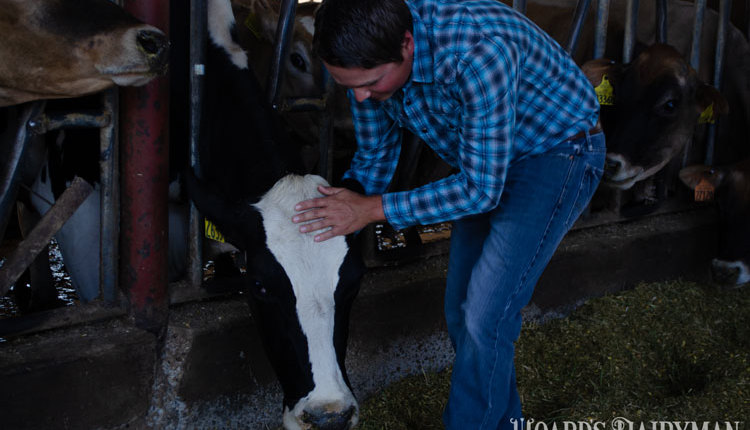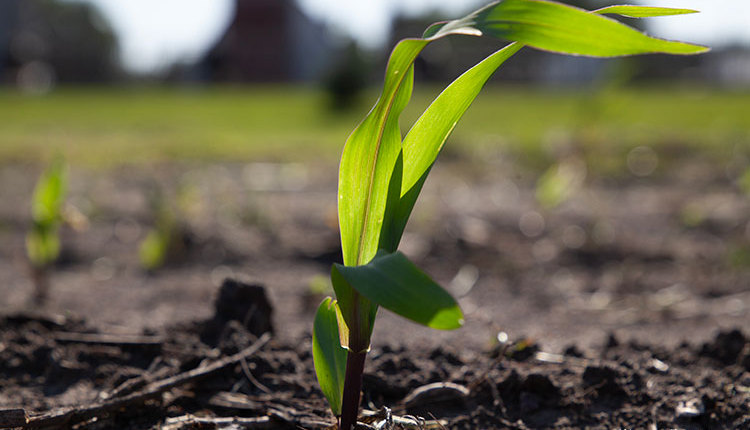
With corn silage harvest underway or starting soon, in many areas the main focus is on optimizing the yield and nutritional value of this important feed ingredient, and rightly so. Trusting that plans are in place and being implemented to achieve our goals for harvest at the correct crop stage, kernel processing, packing, and covering of the silage, there is another topic that deserves some attention.
The time spent in fields during and immediately following harvest is a great opportunity to make observations and take notes on crop health and pest management.
Know your nutrient status
The negative environmental and economic impacts of overfertilization continue to receive a great deal of attention. Of our three major nutrients (nitrogen, phosphorous, and potassium), nitrogen (N) can be the most challenging to dial in as phosphorous (P) and potassium (K) management are a bit more straightforward with soil sampling and record keeping.
For N, leaf “firing” (death of the lower leaves) is often used as a general visual indicator of N status. However, it should not be relied on for decision-making. When considering leaf firing, recognize that a few fired leaves at the bottom of the plant are normal, and if a plant is green all the way to the ground, it has received too much N. Significant concerns about a lack of N compromising crop performance do not start until firing nears the ear leaf.
With any questions about N management, it is critical to look back at weather patterns. Excessive rainfall can leach N from the soil, particularly when this occurs early in the season, while both saturated and droughty soils can inhibit the uptake of nutrients by the plant. Knowing if one or more of these conditions occurred is important to differentiate between insufficient N application and conditions that limit the availability of the applied N to the plant.
If you are observing excessive leaf firing, the end-of-season cornstalk nitrate test can be a useful tool for evaluating crop N status. Check with your state's extension system for interpretation guidelines. Additionally, it is beneficial to sit down with your crop adviser to review scientifically backed N guidelines for your region and how your program aligns. Beyond the quantity of N applied, the timing and form are important management considerations that may need to be addressed.
Watch weeds and pests
Postharvest surveys of fields for pest challenges is a long-standing best management practice, but in the era of herbicide-resistant weeds and insect tolerance to certain genetically engineered traits, this task has taken on even greater importance.
Document any weed outbreaks in your fields and identify the weed species present. First, it is important to understand if these weeds are known to have resistant populations. Then, regardless of concerns about resistance, this information can help you tweak your control program for next year. Is there a problem weed that this year’s control program was just not well equipped to control, or did the weather impact the efficacy of your program? This information is important to developing a program (crop rotation, herbicide chemistries, application timings, and more) best tailored to each field next year.
There is now widespread documentation of tolerance or resistance to certain Bt traits by corn rootworms. Information on the traits and known resistance can be found in the handy Bt trait table. Above-ground indications of root damage caused by corn rootworms appear in the form of “goosenecking,” where the lower stalk is tipped and then the plant begins to grow upright again. When there is no above-ground evidence, it can be beneficial to dig roots to look for root pruning to understand if any damage exists.
If any root damage from corn rootworm is found, it is important to reference the trait packages of the hybrids used to understand if the crop should have been protected or not and then make control plans (such as crop rotation, Bt traits, or insecticides) for next year.
On a side note, there is an added benefit of visually inspecting roots to understand if soil compaction limited root development in any way. Root systems confined to the seed trench or “pancaked” at a given depth are indications of compaction issues.
Taking these steps now is important to setting yourself up for success next season.








